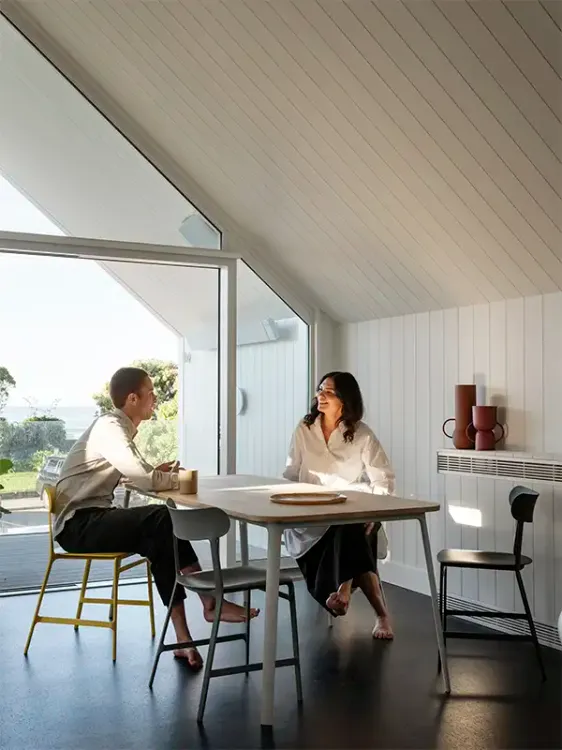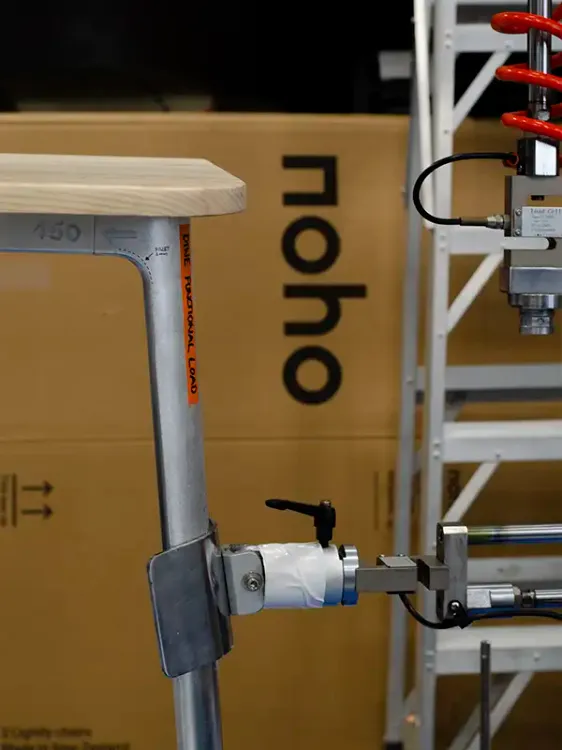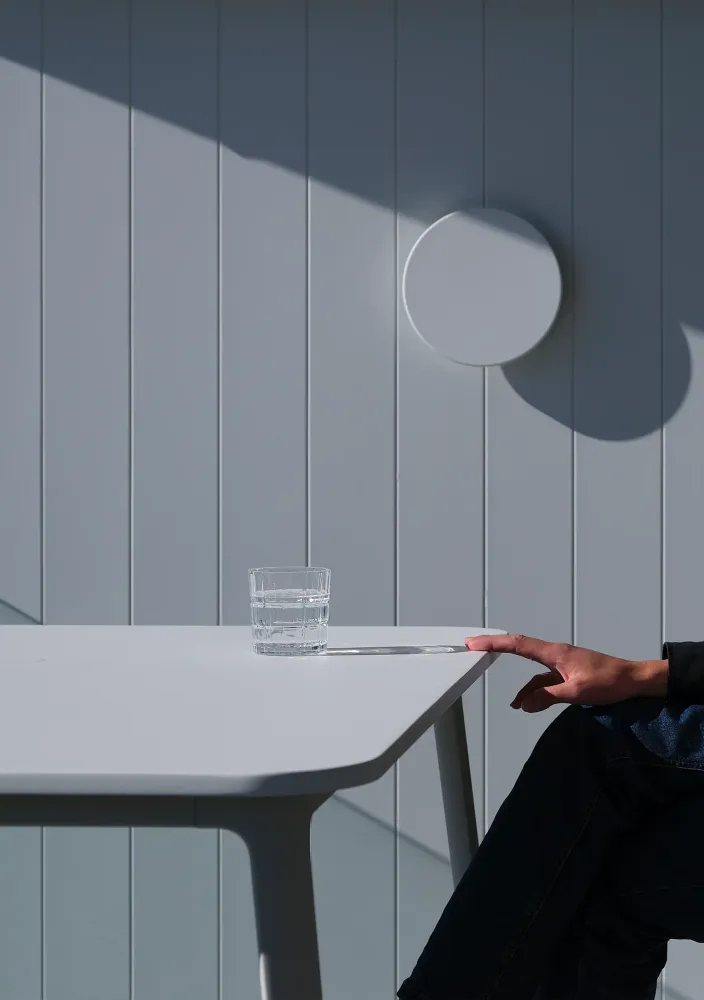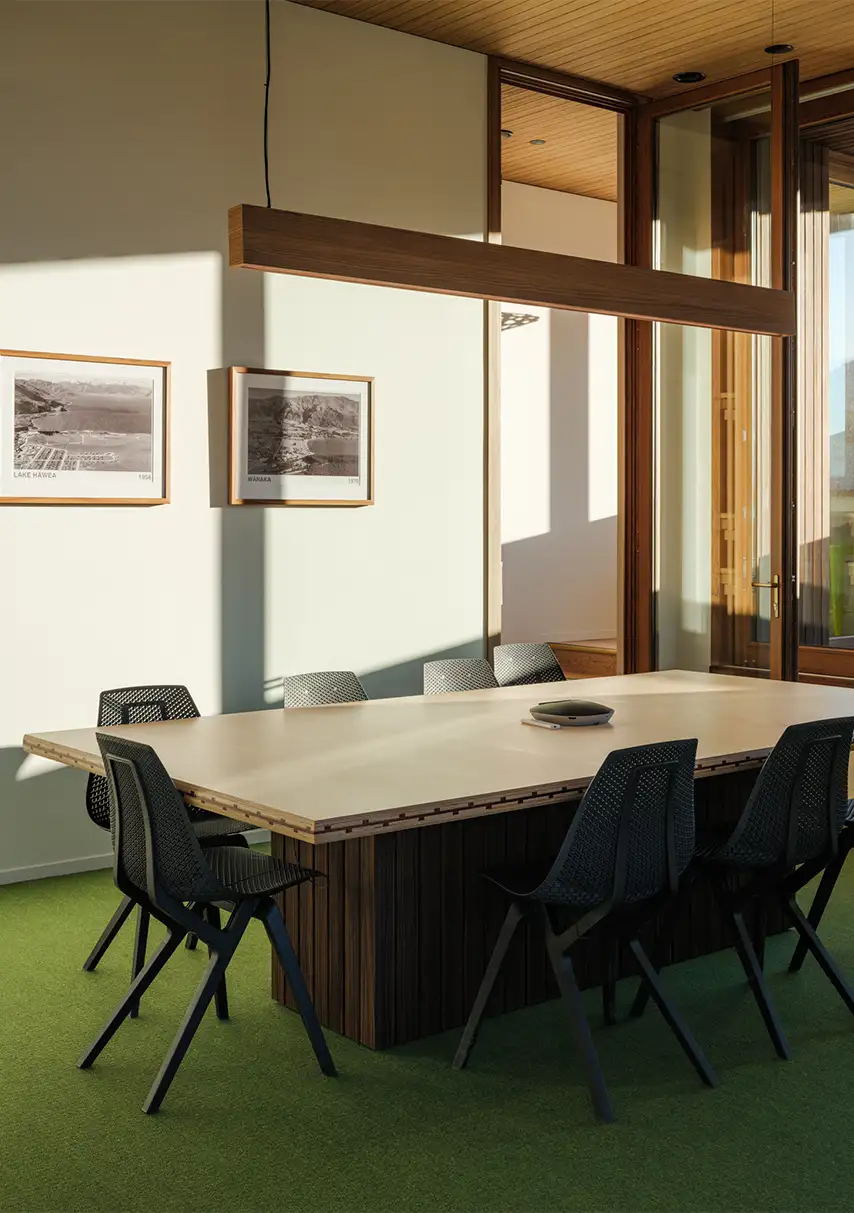Stories
Interview: Fabian Haarbeck on the design process of the Dine table range
We dig deep into the design and development of the Dine table range with Formway lead designer, Fabian Haarbeck. From the conscious material choices, the testing process, and all that goes into making a product perfect for home.
Hi Fabian! Thanks for joining us. We know you well as a very talented designer at our sister company, Formway, but can you introduce yourself to those who don’t know you?
Yes, sure. I’m Fabian. I work for Formway and am the lead designer on the Dine project. I live in Te Whanganui-a-Tara Wellington, a beautiful city by the sea surrounded by mountains and native bush that is often pummeled by wind. I moved to Wellington from Berlin five years ago and started designing furniture for Formway.
—
Why did you decide to design a table?
I think the dining table is the silent hero of the heart of the home. It’s the place where we share, we congregate, and we tell stories. It’s great to be able to design a product that enhances these moments. For us, the Dine project felt like a natural evolution of the Noho family. In the end, we all really wanted a dining table to complement our two chairs.

I’m sure the design process was a long and arduous one? Can you tell us a bit about it?
The research for this project started early on with the development of the Noho Move and Lightly chairs. It starts with video observation in people’s homes. We analyse how people move and what they need, try to identify issues, and then try to deliver on those unmet needs.
After the initial research was done, we focused on delivering Noho Move and Lightly to the market, so it took us several years to restart the design of a dining table.
Luckily the design of a dining table is a bit less complex than the design of our chairs, so we managed to develop this project in a shorter timeframe. Although it still always takes longer than we expect. The design process at Formway is very hands-on. After the initial research, we very quickly go into the workshop and try ideas—ideas that often don’t work out, but in the end, we got there.
—
How big was your design team?
We started the project with a team of two—myself and a very clever design engineer, Brodie Shelton. In our team, we’d take a very collaborative approach to our work. We’d share different tasks. Everyone has their own expertise, but in the end we all work on the same team to achieve the best product possible.
Can you tell us about the material choices you made and why?
When we considered the materials for the Dine table, we focused on using materials that age gracefully. The first material we chose was natural timber for our table tops. We thought it had this beautiful quality which we want in our homes—it’s soft, warm, and rich. Each piece is unique, and I think that’s very beautiful.
We wanted to source the most sustainable timber possible, so we decided to use Ash which is FSC certified and is the best possible solution for our table.
For the frame components we use mostly recycled aluminium from alloy wheels and transmission cables, all from the local domestic market of New Zealand. By recycling these, we’re using 82% renewable energy, which brings the impact of the CO2 emissions down by quite a bit. Recycled aluminium is a great in that regard and New Zealand is probably one of the best places in the world to make it at the moment.
—
What is your favorite detail of the Dine table?
The details on the Dine table are very minimal, and often, you can’t really see how much engineering and design work goes into these. For example, the joints of the table leg to the frame was something we spent weeks and weeks on developing, detailing and fine-tuning. I think, in the end, these kinds of details make the difference between a good product and a great one.

What was the biggest challenge for you?
Our biggest challenge was probably working with timber. As a natural material it it is less predictable, and we needed to learn a lot during the process of designing the table. Luckily, we collaborated with great craftsmen who taught us a lot about the beauty of working with natural timber.
—
I assume the other big challenge was getting all the certifications. Could you tell us a little bit about the testing process?
Testing is an inherent part of the design process. We really make sure that we simulate all the abuse this table can face during its life, so we can deliver a product which can last a lifetime. The Dine table range is designed to surpass the toughest commercial and stability standards.
—
Thanks for giving us some insight into the process of designing the Dine table range. Do you have any ideas of what you'd like to do next?
After designing a dining table, I think it would be very interesting to start looking at the objects we use on the table and how we use and interact with them. In our research, we saw people doing so many different tasks around the dining table, so it would be very interesting to delve into these, and maybe we can find a new opportunity.
—
Experience Dine at home, shop now.






